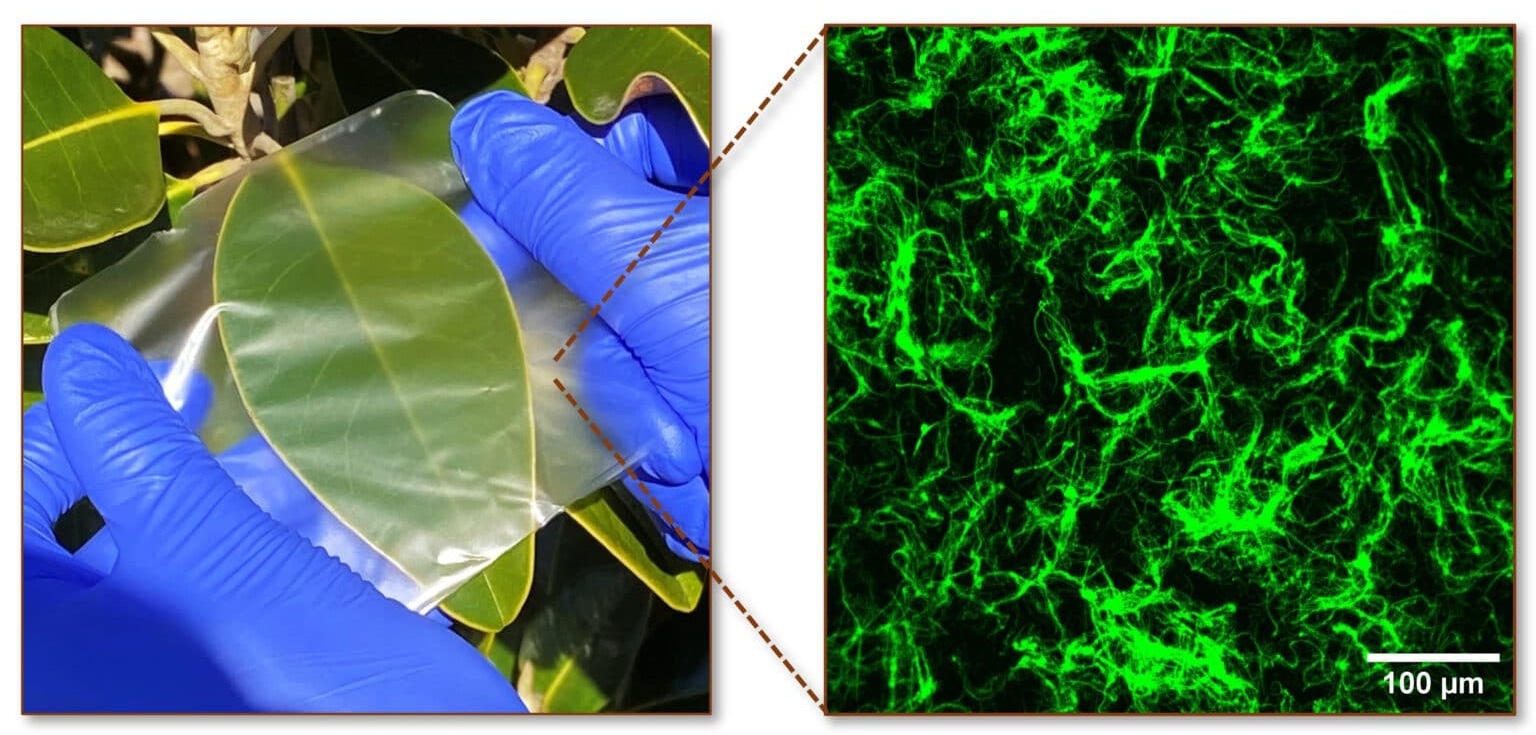According to a recent study from North Carolina State University, materials with increased structure obtained from seaweed and crustaceans could serve as a part of a next-generation solution to the problem of replacing petroleum-based plastic films.
 The biocomposite films look similar to many synthetic plastics (left), however, their structure is hierarchically reinforced as seen in the fluorescence microscopy image (right). Image Credit: Orlin Velev, NC State University
The biocomposite films look similar to many synthetic plastics (left), however, their structure is hierarchically reinforced as seen in the fluorescence microscopy image (right). Image Credit: Orlin Velev, NC State University
Unique biopolymer composite films with increased strength are produced by combining agarose, a biopolymer derived from seaweed and used to generate gels, with chitosan, a biopolymer that hardens crab shells. In addition, the films are translucent, biodegradable, and possess antimicrobial qualities.
They also repel water. The results could ultimately end up in consumer products and food packaging materials that are sustainable.
How do we find sustainable replacements for synthetic polymers? Synthetic polymers make very good films, but we want to replace them with natural biopolymers. The question becomes how do we adjust the joint structure of these natural polymers – in our case, agarose and chitosan – so we can have all the desirable properties of synthetic polymers inside a sustainable, biodegradable film?
Orlin Velev, Study Corresponding Author and S. Frank and Doris Culberson Distinguished Professor, Chemical and Biomolecular Engineering, North Carolina State University
Merely combining agarose and chitosan might not be sufficient. Previous attempts to generate similar mixes, according to Velev, showed increases in characteristics but produced grainy films that might not have been strong enough when dried.
Instead, Velev and his colleagues used chitosan-based fibrillated colloidal scale material to reinforce the agarose sheets. The robust chitosan micro- and nanoscale fibrils are hierarchically branched to offer strength and stability to the agarose film in which they are implanted.
It is challenging to modify natural polymers chemically, but we can alter their morphology and use them as composites. We use chitosan dendritic particles to reinforce the agarose matrix because of the compatibility of both materials leading to good mechanical properties; chitosan particles also have an opposite charge to agarose. When mixed, these charges are neutralized so the resulting materials also become more resistant to water.
Yosra Kotb, Study First Author and Graduate Student, North Carolina State University
According to the study, the biopolymer composites are nearly four times stronger than agarose films alone, and they also resist E. coli, a widely researched bacterium.
The study has also shown that a sheet constructed of biopolymer composite sheets disintegrated significantly after a month underground, yet a standard plastic sandwich baggie remained totally intact after the same duration underneath.
Velev added, “Interestingly, our composite is initially strongly antibacterial but because it is made from natural materials, after some time bacteria will still colonize it–so after a month underground it will biodegrade readily.”
Velev also mentioned that his team would keep trying to optimize the biopolymer composite films’ structure to eventually achieve qualities that are comparable to those of synthetic polymers.
“If you package food, you want the package to be impermeable to oxygen and water. But natural materials are permeable, so we will continue to work to make our films more impermeable to water and oxygen,” Velev added.
One of the objectives for the future is to make the material production process more scalable.
Velev concluded, “How do you make the polymer substitute film in a continuous process that is rapid enough to make it in large enough amounts – like papermaking?”
Results are published in Cell Reports Physical Science. Regarding the innovative biopolymer composite films and their manufacturing technique, NC State has submitted a patent application. The National Science Foundation, through grant CMMI-2233399, as well as partial funding from EFMA-2029327, CMMI-1825476, and CMMI-2134664, have supported this study.
Journal Reference:
Kotb, Y., et. al. (2023) Hierarchically reinforced biopolymer composite films as multifunctional plastics substitute. Cell Reports Physical Science. doi:10.1016/j.xcrp.2023.101732